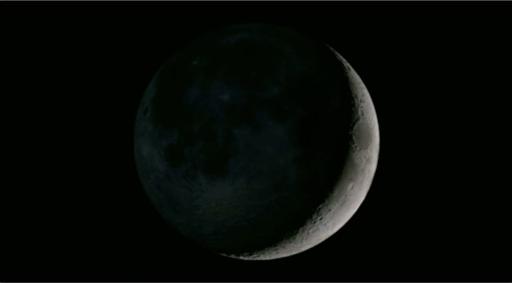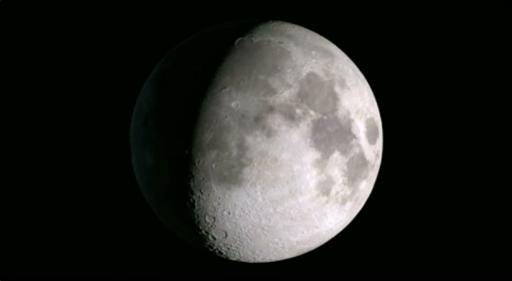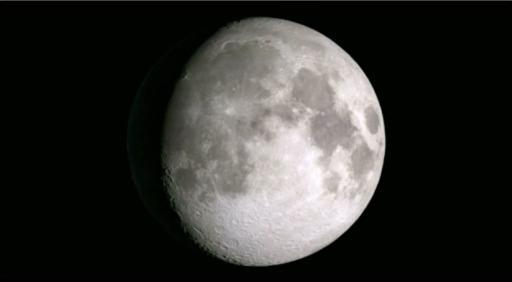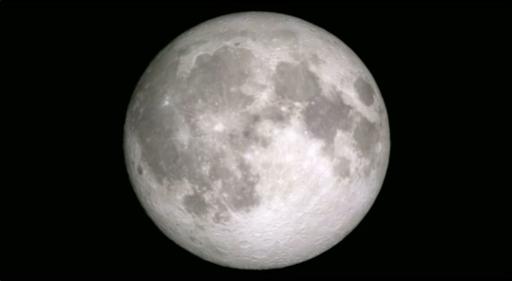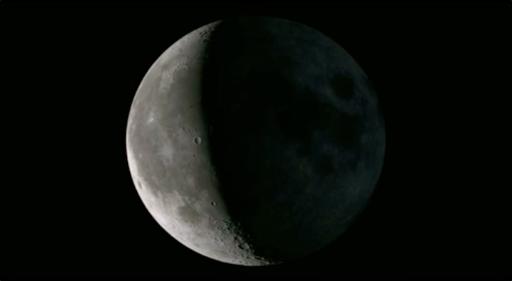The Moon, U Sunok
Artwork Overview
If you wish to reproduce this image, please submit an image request
Images
Label texts
The moon influences the ebb and flow of tides all over the world. Folklore and anecdotal evidence suggest that the moon can sway human behavior and recent scientific evidence shows lunar cycles indeed affect our daily rhythms. U Sunok composed this video of the moon phasing through its monthly cycle from footage taken by the Lunar Reconnaissance Orbiter, a robotic mission launched by NASA in 2009 to map the moon’s surface.
The moon influences the ebb and flow of tides all over the world. Folklore and anecdotal evidence suggest that the moon can sway human behavior and recent scientific evidence shows lunar cycles indeed affect our daily rhythms. U Sunok composed this video of the moon phasing through its monthly cycle from footage taken by the Lunar Reconnaissance Orbiter, a robotic mission launched by NASA in 2009 to map the moon’s surface.
There is so much loneliness in that gold.
The moon these nights is not the moon
the first Adam saw. Long centuries
of human sleeplessness have filled her
with ancient tears. Look at her. She is your mirror.
—Jorge Luis Borges, “The Moon”
As Argentine writer Jorge Luis Borges (1899–1986) observes in his poem, the moon is a mirror of time. As a cosmic body, the moon influences the ebb and flow of tides all over the world, but recent studies have demonstrated that the moon also affects our actions. While folklore and anecdotal evidence suggest that the moon can sway human behavior, recent scientific evidence demonstrates how lunar cycles indeed affect our circadian rhythms. U Sunok composed this video of the moon phasing through its monthly cycle from footage taken by the Lunar Reconnaissance Orbiter, a robotic mission launched by NASA in 2009 to map the moon’s surface. In her lyrical video, U Sunok shrinks the duration of the lunar year to just fourteen short minutes.
There is so much loneliness in that gold.
The moon these nights is not the moon
the first Adam saw. Long centuries
of human sleeplessness have filled her
with ancient tears. Look at her. She is your mirror.
—Jorge Luis Borges, “The Moon”
As Argentine writer Jorge Luis Borges (1899–1986) observes in his poem, the moon is a mirror of time. As a cosmic body, the moon influences the ebb and flow of tides all over the world, but recent studies have demonstrated that the moon also affects our actions. While folklore and anecdotal evidence suggest that the moon can sway human behavior, recent scientific evidence demonstrates how lunar cycles indeed affect our circadian rhythms. U Sunok composed this video of the moon phasing through its monthly cycle from footage taken by the Lunar Reconnaissance Orbiter, a robotic mission launched by NASA in 2009 to map the moon’s surface. In her lyrical video, U Sunok shrinks the duration of the lunar year to just fourteen short minutes.
There is so much loneliness in that gold.
The moon these nights is not the moon
the first Adam saw. Long centuries
of human sleeplessness have filled her
with ancient tears. Look at her. She is your mirror.
—Jorge Luis Borges, “The Moon”
As Argentine writer Jorge Luis Borges (1899–1986) observes in his poem, the moon is a mirror of time. As a cosmic body, the moon influences the ebb and flow of tides all over the world, but recent studies have demonstrated that the moon also affects our actions. While folklore and anecdotal evidence suggest that the moon can sway human behavior, recent scientific evidence demonstrates how lunar cycles indeed affect our circadian rhythms. U Sunok composed this video of the moon phasing through its monthly cycle from footage taken by the Lunar Reconnaissance Orbiter, a robotic mission launched by NASA in 2009 to map the moon’s surface. In her lyrical video, U Sunok shrinks the duration of the lunar year to just fourteen short minutes.
This video uses footage of the moon taken by NASA over the course of a year to create a poetic projection of the monthly lunar cycle of waxing and waning. Since ancient times the moon has transfixed human imagination. In addition to its gravitational influence over ocean tides, the moon has long been believed to sway human emotions. A recent study of circadian rhythms conducted by Swiss scientist Christian Cajochen suggests that lunar cycles may indeed affect sleep, but more definitive research is needed. Argentinian writer Jorge Luis Borges likens the moon
to a “mirror of time” in the following poem.
There is such solitude in that gold.
The moon of these nights is not the moon
The first Adam saw. Long centuries
Of human vigil have filled her with
An old lament. See. She is your mirror.
—Jorge Luis Borges, “The Moon”
This video uses footage of the moon taken by NASA over the course of a year to create a poetic projection of the monthly lunar cycle of waxing and waning. Since ancient times the moon has transfixed human imagination. In addition to its gravitational influence over ocean tides, the moon has long been believed to sway human emotions. A recent study of circadian rhythms conducted by Swiss scientist Christian Cajochen suggests that lunar cycles may indeed affect sleep, but more definitive research is needed. Argentinian writer Jorge Luis Borges likens the moon
to a “mirror of time” in the following poem.
There is such solitude in that gold.
The moon of these nights is not the moon
The first Adam saw. Long centuries
Of human vigil have filled her with
An old lament. See. She is your mirror.
—Jorge Luis Borges, “The Moon”
This video uses footage of the moon taken by NASA over the course of a year to create a poetic projection of the monthly lunar cycle of waxing and waning. Since ancient times the moon has transfixed human imagination. In addition to its gravitational influence over ocean tides, the moon has long been believed to sway human emotions. A recent study of circadian rhythms conducted by Swiss scientist Christian Cajochen suggests that lunar cycles may indeed affect sleep, but more definitive research is needed. Argentinian writer Jorge Luis Borges likens the moon to a “mirror of time” in the poem below:
There is such solitude in that gold.
The moon of these nights is not the moon
The first Adam saw. Long centuries
Of human vigil have filled her with
An old lament. See. She is your mirror.
~Jorge Luis Borges, “The Moon”
This video uses footage of the moon taken by NASA over the course of a year to create a poetic projection of the monthly lunar cycle of waxing and waning. Since ancient times the moon has transfixed human imagination. In addition to its gravitational influence over ocean tides, the moon has long been believed to sway human emotions. A recent study of circadian rhythms conducted by Swiss scientist Christian Cajochen suggests that lunar cycles may indeed affect sleep, but more definitive research is needed. Argentinian writer Jorge Luis Borges likens the moon to a “mirror of time” in the poem below:
There is such solitude in that gold.
The moon of these nights is not the moon
The first Adam saw. Long centuries
Of human vigil have filled her with
An old lament. See. She is your mirror.
~Jorge Luis Borges, “The Moon”
Exhibition Label:
"Forms of Thought," Mar-2014, Kris Ercums
This video uses footage of the moon taken by NASA over the course of a year to create a poetic projection of the monthly lunar cycle of waxing and waning. Since ancient times the moon has transfixed human imagination. In addition to its gravitational influence over ocean tides, the moon has long been believed to sway human emotions. A recent study of circadian rhythms conducted by Swiss scientist Christian Cajochen suggests that lunar cycles may indeed affect sleep, but more definitive research is needed. Argentinian writer Jorge Luis Borges likens the moon to a “mirror of time” in the poem below:
There is such solitude in that gold.
The moon of these nights is not the moon
The first Adam saw. Long centuries
Of human vigil have filled her with
An old lament. See. She is your mirror.
~Jorge Luis Borges, “The Moon”

